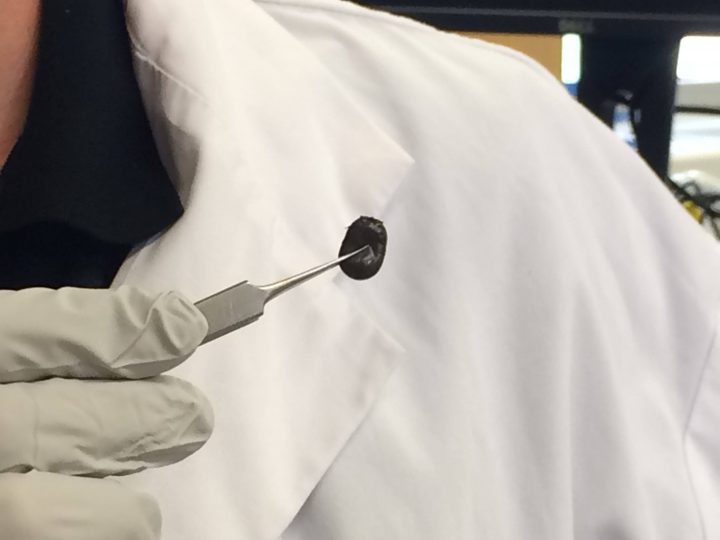Daniel Fitzgerald has handled about 10,000 ticks and has never been bitten. The lab technologist credits safe lab practices and not good luck.

Fitzgerald heads up the Tick Surveillance program at Alberta Agriculture and Forestry. He’s been tracking tick movement for the past 10 years.
READ MORE: More ticks means an increase of Lyme disease across Canada — thanks to climate change
This time of year is his busy season. Every day, about 50 ticks are delivered to his lab by veterinarians or public health clinics.
Among the vials was one packed full of repulsive-looking ticks, engorged to the size of small grapes.
The dozen ticks were removed from just one poor pooch.
“There’s only been 12 days out of the last year that we haven’t got a tick sent in,” Fitzgerald said.
“Our numbers have really gone up.”
In 2013, Alberta Health joined the tick surveillance program to focus on finding the blacklegged tick; the species that could make people and pets sick.
They are now showing up in the Edmonton area.
READ MORE: Federal government to pour $4 million into first-ever Lyme disease framework — here’s why
The province said there is no evidence the blacklegged ticks are reproducing here. It’s believed migratory birds and other travellers are bringing them in from other parts of the country.
In 2016, of the 2,781 ticks submitted to the lab, 34 were blacklegged ticks found on animals and tested positive for Borrelia burgdorferi, the bacteria that causes Lyme disease.
The year before, just 11 of the 1,814 ticks submitted to the lab tested positive for the bacteria.
Alberta Health said the risk of getting bitten by a blacklegged tick is low and the risk of contracting Lyme disease is even lower.
So far this year, Alberta has had four documented cases of Lyme disease, but all of these cases came from ticks outside of the province.
Fitzgerald estimated about one to two per cent of the ticks he tested had the potential to infect someone with Lyme disease.
“It’s very low numbers. It’s not zero but it’s really low.”
So how do ticks latch on?
Fitzgerald said the arachnids sit and wait on a blade of grass or low bush and “ambush” when someone or something walks by. They do not fly.
Tick season: How to property remove, avoid ticks and prevent bites
Male ticks will stay on the host to feed and mate until they die or get knocked off. Female ticks grow much larger and, once fully engorged to the size of a small grape, they will drop to the ground and lay up to 5,000 eggs.
Fitzgerald said you don’t need to panic if you find a tick stuck on your skin. He said there is time to remove it before it can inject bacteria, which can take 24 to 72 hours.
“It’s not like a mosquito where it flies in and you caught something.”
A number of environmental public health offices are accepting ticks to be submitted to the surveillance program.







Comments